Diving - The adventure continues!
Further Adventures under the sea (and smaller bodies of water!)
My last update on diving was back in late 2012, when I ticked off a 'dream dive' and dived the wrecks of the German Fleet in Scapa Flow.
I logged my 50th dive there and now, as the 2013 season for regular (at least) diving, draws to a close, I've ramped that up to 94 (and hope to do a few more before the year's done).
The 2012, post-Scapa, dives were tame, training affairs, mostly in the dark and cold of Vobster Quay, which despite some of my scariest moments in diving (there's something quite intimidating about dark, cold, zero vis diving), I rather enjoy diving.
Sadly, although the diving was OK, I didn't get all my Sports Diver exercises complete and, remarkably, as 2013 draws to an end, I still haven't!
2013 has been a good year for diving though.
Kimmeridge and Porthkerris, Cornwall
The winter of 2012/2013 seemed to linger on and I didn't get diving until late April, with a couple of kit-tryouts in Littleton Lake, near Shepperton.
Littleton's shallow and undeveloped - We use it as we have an affiliaton with the Civil Service through some members, but it's not a public lake and is mostly used for CS Yachting - but it's the perfect place for a couple of short dives to remind yourself how to dive and to check your equipment out.
Early May, saw the club set out early one Sunday for Kimmeridge Bay with the RHIB. Sadly sea fog saw us sit around in the sun on the cliff until noon and then, when we did set out, the viz was near zero on the wreck of the Black Hawk to the degree that only 1 buddy pair actually found it!
Not a great start to the season, but things got better over the late May Bank Holiday when we went to Porthkerris near the Lizard in Cornwall.
The club stayed in a caravan nearby, but I took Mandy and Ryan and we stayed in one of the dive centre's appartments and very comfortable it was too.
We had a couple of dives each day, on reefs nearby. The light and vis were good and I was impressed by the amount of fish we saw, but others who've dived here regularly said it was 'dead' compared to previous years, suggesting that the late winter was still making it's presence felt.

Anenome
The highlight for me, was a dive on the 'Pinnacles' which was quite surgy, but alive with fish and other sea creatures and easy to explore, being described as 'like a layered Wedding Cake'.
Diving with fellow club member Martin Steagall is always good as he's an incredible eye for, and knowledge, of sea creatures and always finds interesting stuff that I wouldn't even notice.

Martin S. attracts a male Cuckoo Wrasse
Mandy and Ryan did some local sightseeing, the weather being very kind to us, and we all had an enjoyable couple of days.
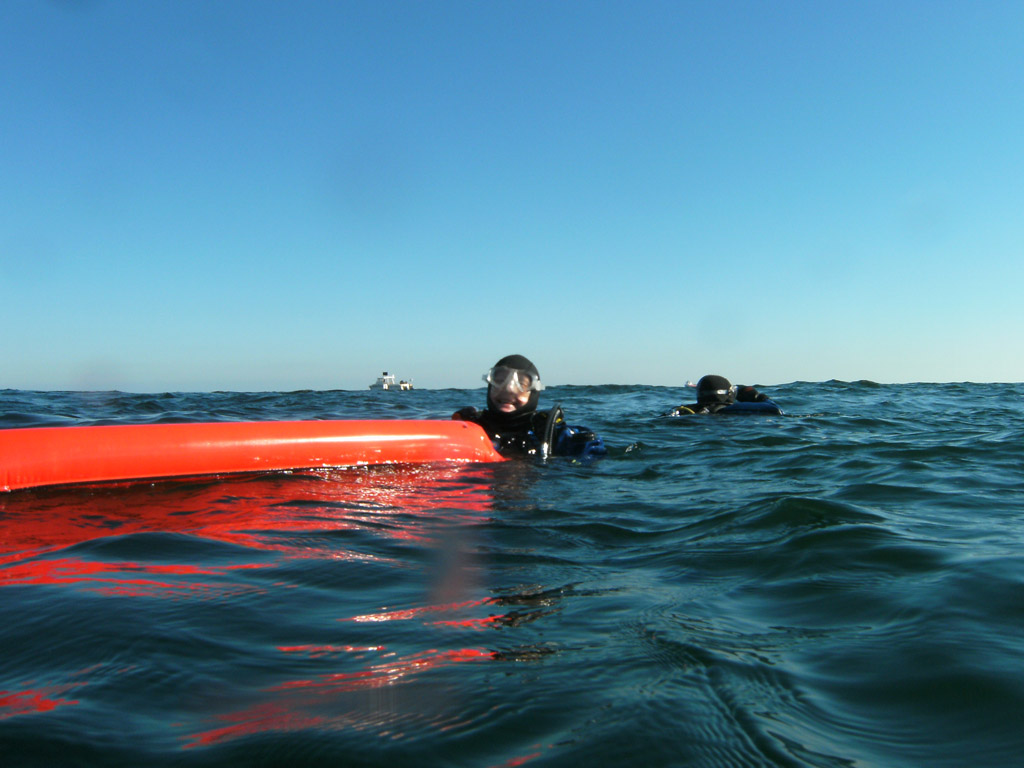
Pick me up, Scotty!
Selsey and the Cuckoo
The club had decided to 'adopt' and survey a wreck at Selsey over 2013.
"The Cuckoo" was a WW2 moored shelter intended for RAF pilots to ditch near and shelter in until they could be picked up by patrol boats.
It seems none were ever used, but one now lies alongside the Mulberry Harbour parts and a Landing Craft at Selsey.
In early June we set out on a nice sunny Sunday to check it out and mark it with GPS for when we returned later to carry out the Survey.
On the first dive, we found the wreck (not hard as the 3 wrecks are joined by ropes on the seabed to make them easy to navigate between) and took a few photos. There were plenty of fish around the Mulberry parts and I spotted a Dogfish as we returned to the Mulberry to return to the boat.

Martin P. explores the Cuckoo
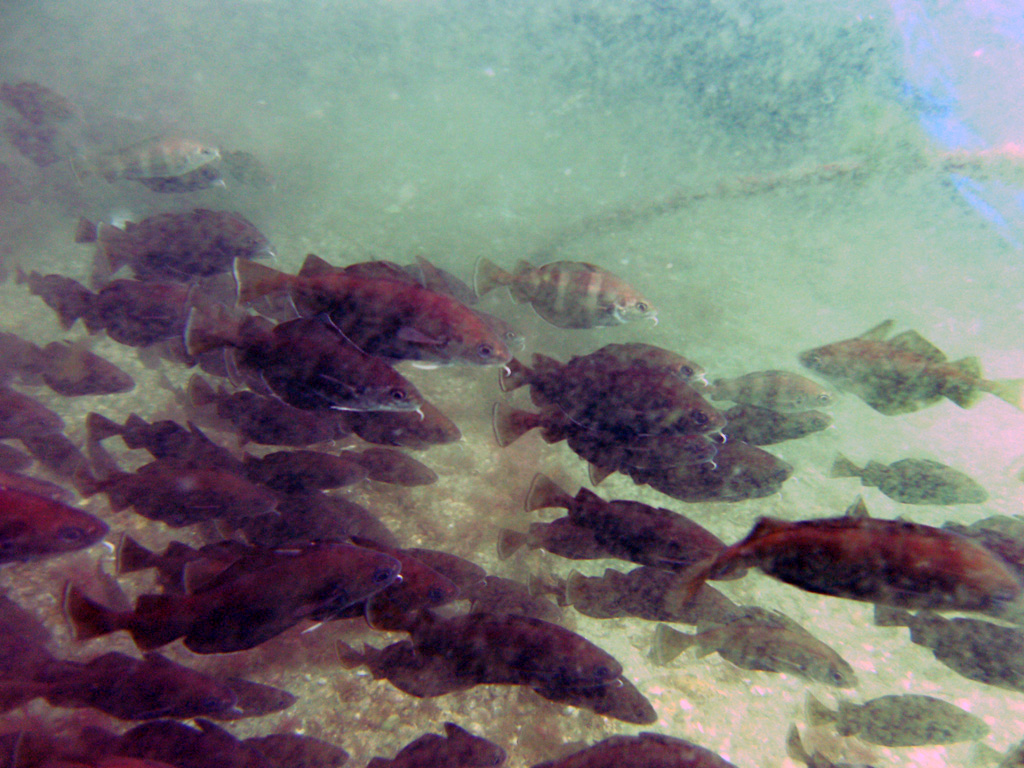
Lots of fish around the Mulberries
On the second dive, Martin and I understook to send up a DSMB from the Cuckoo so that the RHIB driver could record the exact location on the boat's GPS system.
Unfortunately, there was a bit of a miscalculation on tide times and we found ourselves battling against a strong flow, resulting in using more air than usual.
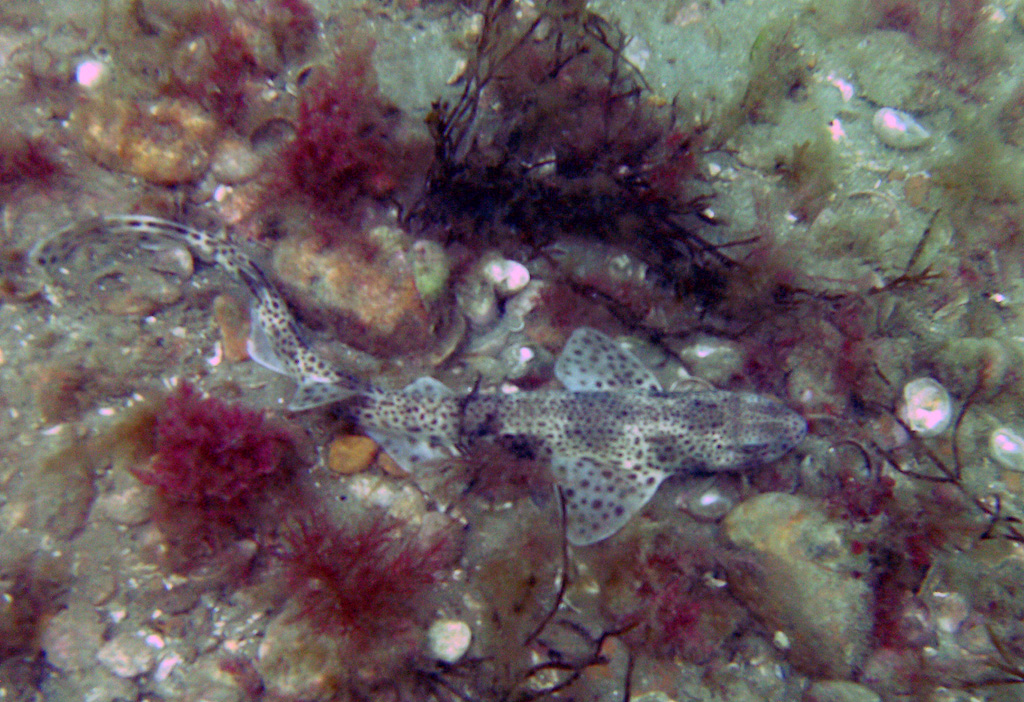
Dogfish
We did manage to do the job and see the Landing Craft AND Mulberries (very briefly), but we were both pretty tired after our strenuous dive!

The bow of the Cuckoo
Later in the year I returned for a weekend, with the intention of doing some surveying, but the wind was too strong and I didn't even get in the water! Fortunately the club were there for the week and it got better a couple of days and some useful surveying was done.
Mauritius
In early July we had a family holiday in Mauritius, with a short stopover in Dubai on the way back.
Needless to say, I was keen to get some diving in (ticking off another Ocean, this time the Indian) and Lauren decided to learn to dive while we were there.
The first day the wind was strong on the east of the island, where we were staying, so a small group of us were bussed by the Dive Centre up to the Trou Aux Biches area in the North West, where we dived on a deliberately sunk Japanese Trawler, called The Stella Maru, first of all and then on a lovely reef.

Diving the Stella Maru - Wonderful vis!

Ascending to the deck

Working well as an artifical reef, alive with fish
The variety of fish was impressive and the vis expectedly good, but there didn't seem to be as many fish as in the Red Sea or Cuba.

great vis meant wreck was visible from high above
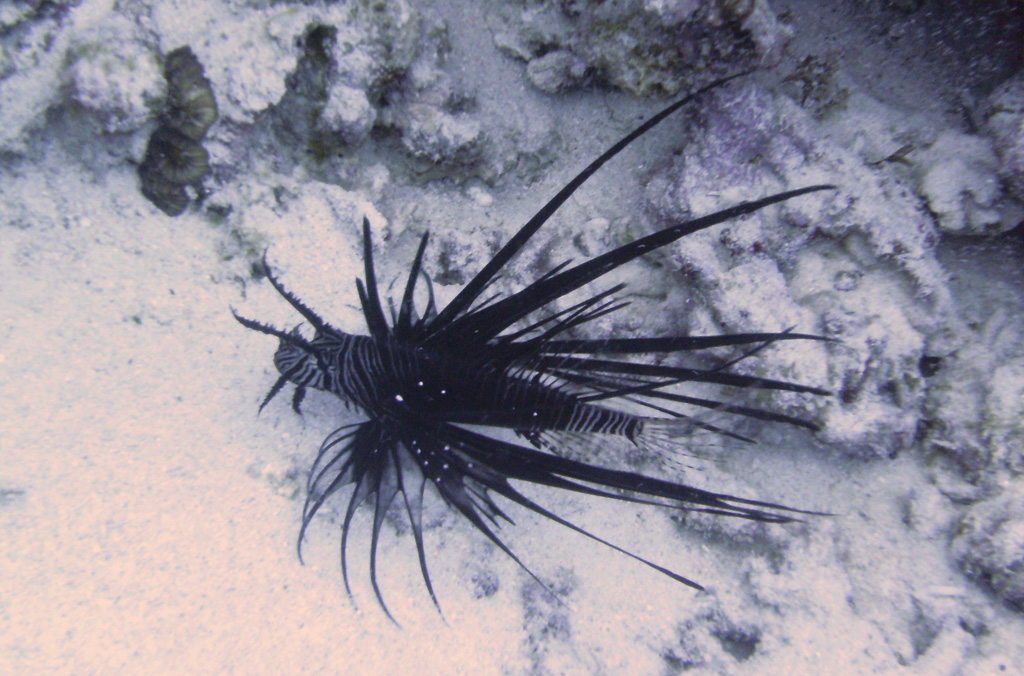
Lion fish

Marbled Grouper
A couple of days later, I joined Lauren and her instructor on a dive in the lagoon in from the Tousserok hotel (where the dive centre operates from) and got to see some impressive fish, including some Scorpion Fish, taking some photographs and exploring the reef whilst Lauren carried out some exercises.
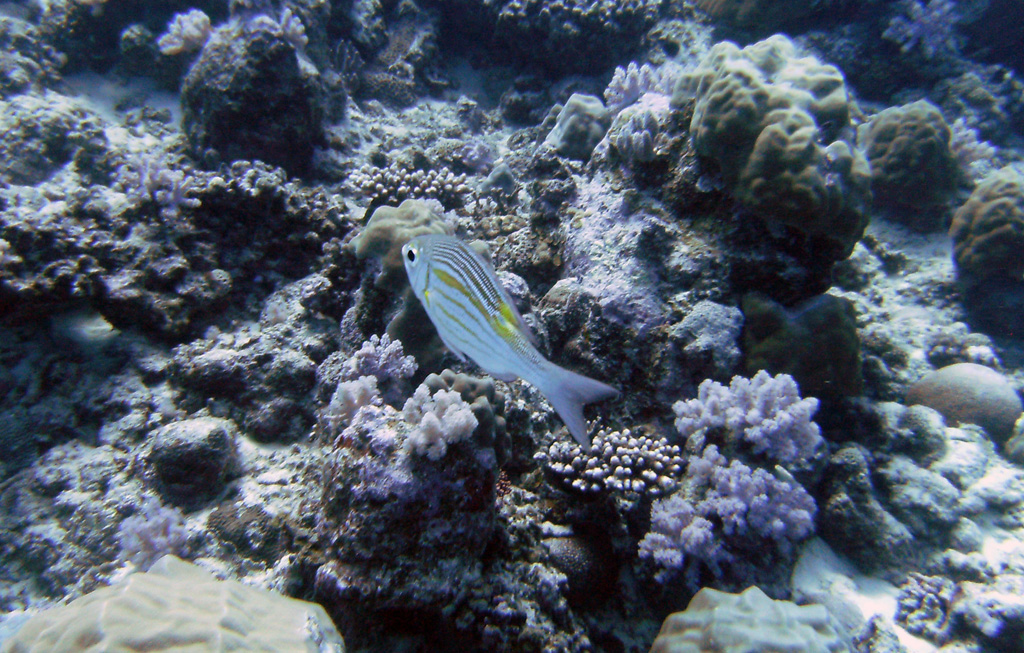
Damselfish
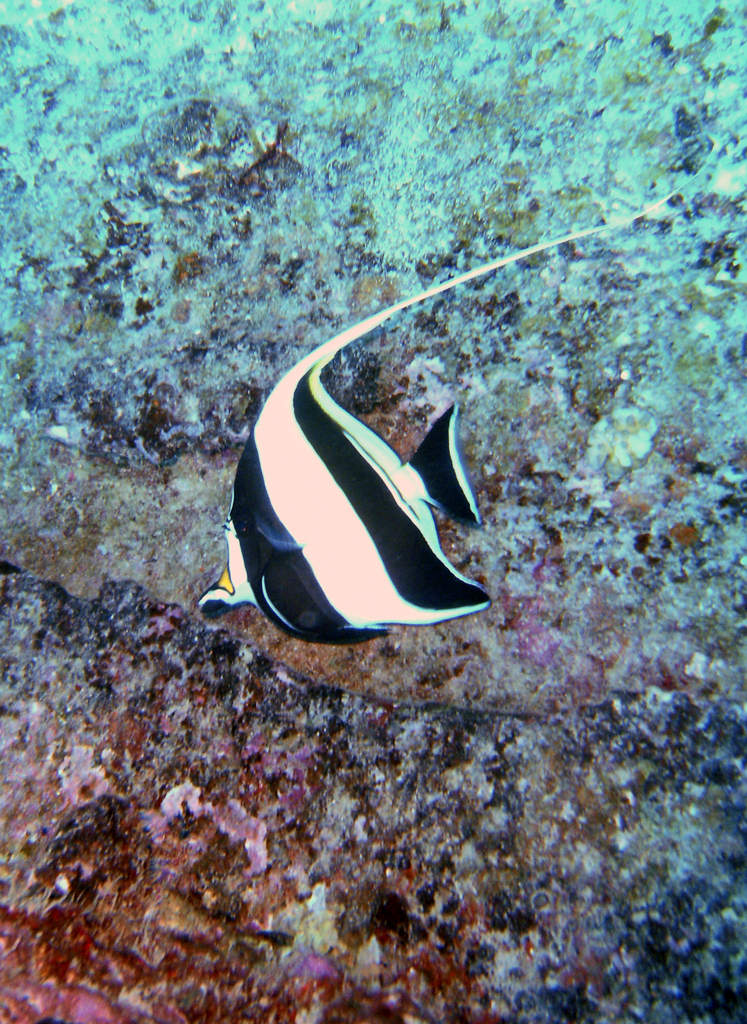
Moorish Idol
The final day's diving here, though, was the undoubted highlight.

Guide took food and these fish were expecting it!

Scorpion Fish
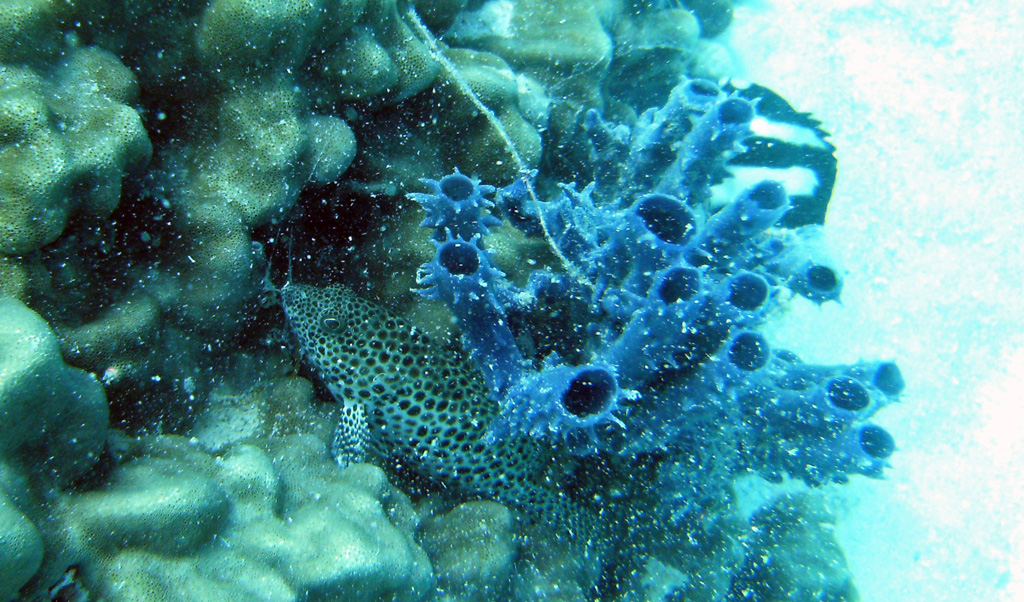
Honeycomb Grouper
I'd mentioned to the dive centre boss that I was keen to dive "The Pass" at Bel Mare, which is a very swift drift dive out through the reef.
Lauren's training had progressed very well and for her final dives he took us out to dive The Pass twice.
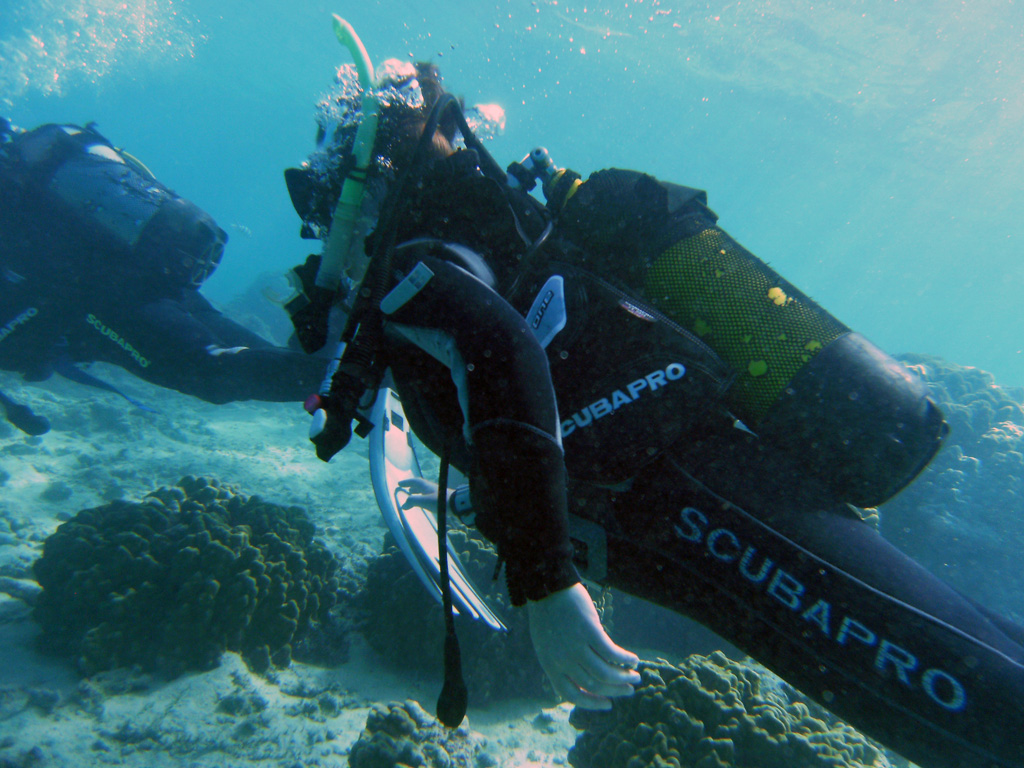
Lauren undergoing instruction...
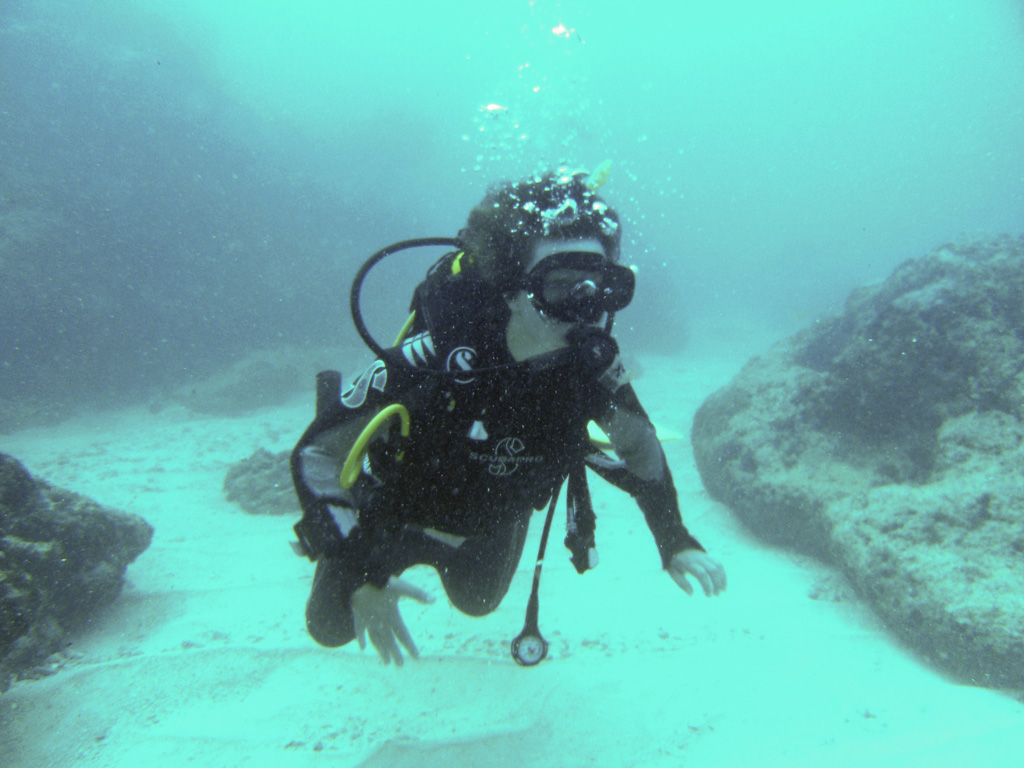
...and in a rare moment of inertia in 'The Pass'
These were great drift dives, really evoking that feeling of flying that people talk of, but in my experience, rarely actually encounter.
There were plenty of shoals of fish arouund, but sadly it was the wrong time of year for Sharks and Rays that are supposed to be a common sight here.
On the second dive, though, we did see a turtle which was a first for me and a great way to finish of Lauren's Open Water course!
The diving was good in Mauritius, although being winter, it seems we didn't go at the best time. I wouldn't go to Mauritius in Winter JUST to dive, but it was good to dive there as I was there and I would recommend any diver who is there to give it a go.
Catalina, California
After a few years with the same employers, I changed jobs in June and my new employer sent me to LA for a week's training the day I returned from our summer holiday.
I'm not a big fan of LA, but the chance to dive in the Pacific seemed too good to miss and I emailed a few Long Beach dive centres.
It was only after I arrived in the States that I heard from Sundivers, run by an English woman, who had trips going out to Catalina on the Saturday before I returned.
I plumped for a 3 dive trip and woke up on the Queen Mary (another story) early to get around for a 7AM start.
I borrowed gear from the centre and was a little concerned that I got a wet suit as I'd heard locals mostly dived in drysuits, but this didn't turn out to be the case (maybe a third of those on board did) and the air temperature at Catalina was in the high 20s with bright sunshine, although the trip out had been under thick cloud.
Catalina's renowned for its Kelp forests and we did 3 dives, with increasinlgy thick kelp. Indeed, by the 3rd dive, it was more akin to a jungle of kelp than a forest!.
The water was around 15C, so plenty warm enough, I found, for a wet suit, especially as you soon warmed on the surface.
Our first dive was on a spot they called 'Fraggle Rock'. The kelp was metres high and quite plentiful, but you could swim between it with ease and keep your buddy in sight.
Fish were plentiful, especially the big, goldfish like, Garribaldis.
We moved onto Big Geiger, which features much denser kelp and, towards the end of the dive, an impressive wall, reaching down many metres below us.
We safety stopped by hanging onto the kelp attached to the wall.
The final dive was on Africa West, where the kelp was incredibly dense and it was near impossible to keep your buddy in sight. Once or twice I lost him (or vice versa), but I found that raising up a little and looking for his bubbles was the answer and we managed to get back together each time.
After a while, we came out of the Kelp and explored the flat expanse of sand, with huge crabs traversing it, looking like sci-fi armoured vehicles.
The diving in Catalina was unlike anything I'd done elsewhere and I was really glad I'd had the opportunity to do it. Who knows if the opportunity will arise, but I would love to dive there again sometime, even if it's probably not on most people's "must dive" list!
Sadly no photos from diving in Catalina as I didn't take my camera.
Read some more of my diving experiences, by clicking the icons below.


